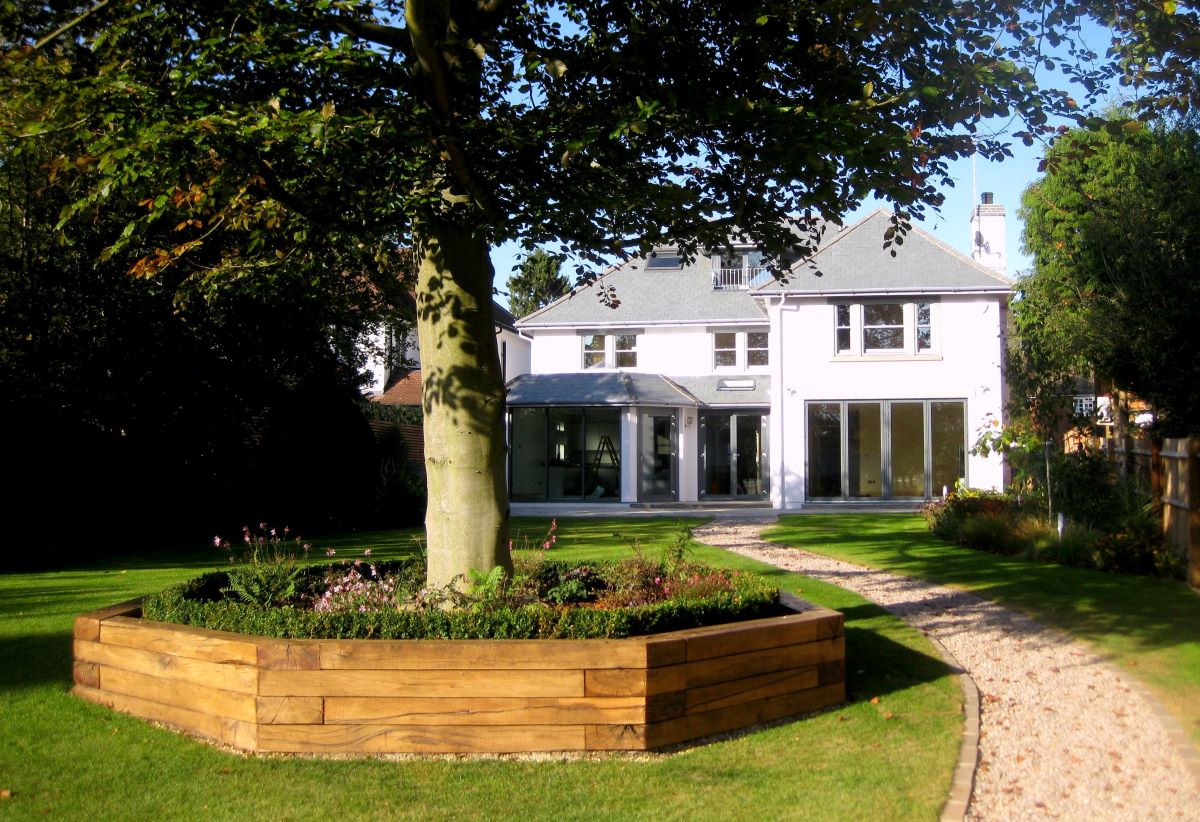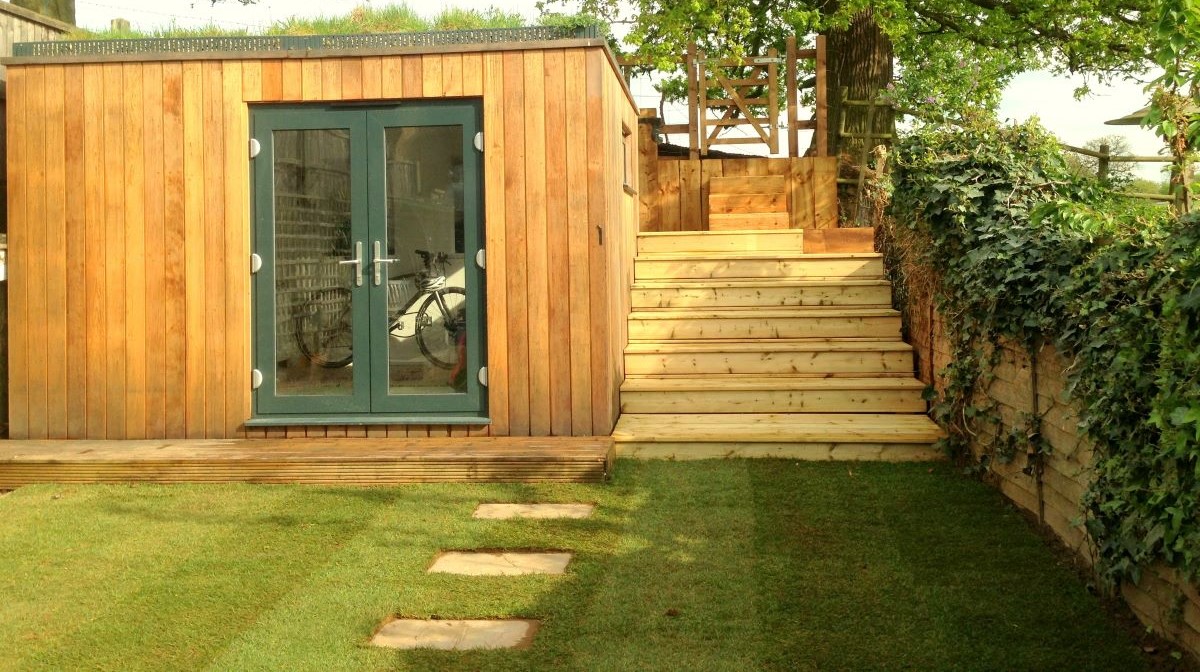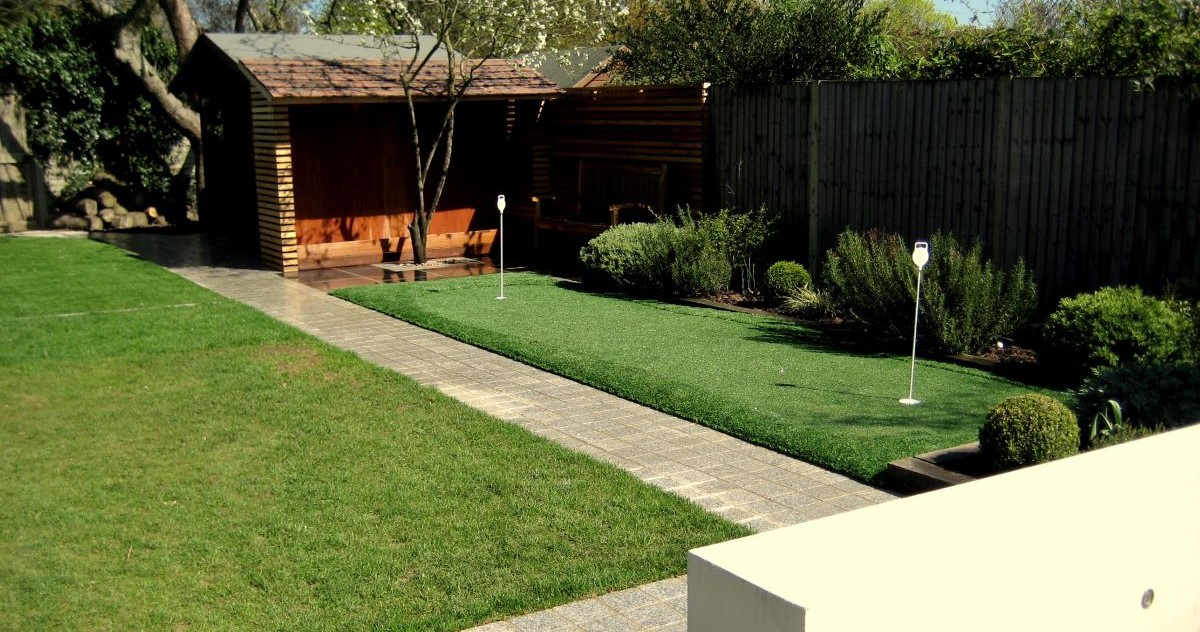Get top-quality lawn services in Exeter – turf laying, care, re-turfing, reshaping, Topsoil, stone edging, and landscaping. Transform your outdoor space into a lush oasis. Get a beautiful lawn in Exeter now!
Why Exeter Landscapes • Turfing Exeter
Exeter Landscapes offers premium turfing and landscaping services in Devon. Our services include re-turfing, levelling, terracing, retaining walls, sleeper beds, and drainage assistance. We use high-quality Topsoil and prepare the ground carefully before laying turf to ensure optimal growth. Trust us for expert garden design.
Ideas • Inspiration
Laying • Lawn Problems • Design Ideas • Moles & Leather Jackets • FAQs
Get in Touch • Exeter Landscapes
Con
Turfing Exeter • Benefits Of Turf
Natural turf has many benefits. It filters dirt and dust, locks away carbon dioxide, and produces oxygen. It reduces runoff and soil erosion, making it ideal for sloping gardens. Additionally, it reduces noise in urban areas by approximately 10 decibels.
Turfing & Turf Exeter: The Perfect Lawn
A perfect lawn requires careful attention to drainage, level, Topsoil, and turf quality. Replacing your property with turf can give you an “instant” lawn that transforms your garden quickly.
Exeter Landscapes Turf & Turfing Guides
Turf & Turfing Exeter: Laying Guide
Landscapes’ guide to great turfing in Exete. Remove existing lawn with a turf cutter or mini digger, dispose of waste, level, and lay new turf, in Exeter.
1# Turf & Turfing Exeter: Removing Your Lawn
Removing a lawn can be time-consuming and generate waste. A sharp spade was traditionally used to reuse the turf. Killing the property and motivating are other methods. Turf cutters are best for small areas. Soak the ground if it’s too hard. Use a mini digger for more extensive lawns.
2# Turf & Turfing Exeter: Killing The Lawn & Motivation
To kill weeds in your lawn, apply weed killer to the entire area, leave for a few weeks, and rake off the thatch. Add Topsoil and re-turf. But beware of harmful chemicals, and consider more eco-friendly alternatives.
3# Using A Turf Cutter
Rent a turf cutter to remove a large area of grass, in Exeter. Water the lawn the night before. Adjust the blade height and reuse the thick turf, in Exeter. For complete replacement, set the blade thin to remove the turf with less waste and preserve Topsoil, in Exeter
5# Removing Turf Using A Mini Digger
When dealing with large lawns, hiring a mini digger is recommended. A mini digger is convenient as it can fit through doors and gates, saving time and effort. However, caution should be taken when removing Topsoil as it can increase costs.
6# Turf & Turfing Exeter: Getting Rid Of The Waste
If you have waste turf rolls in a small garden, you can recycle it by creating a soil pile in a specific area behind a greenhouse or shed, in Exeter. Over time, the turf rolls will decompose and form Topsoil, in Exeter. For more significant projects, it’s best to use a skip and inform the company about the soil and turf. Make sure to check if your grab hire company accepts turf in Exeter.
7# Turf & Turfing Exeter: Leveling Your Lawn
Grade and level your garden using a turfing rake, removing rocks and stones. Add at least 4 inches or 100mm of quality topsoil, then rake and level again. Use a pedestrian roller from a rental shop to finish the job.
8# Turf & Turfing Exeter: Add Turf
Add quality lawn turf to your levelled lawn. Water regularly for a couple of weeks until it’s well-established. Avoid walking on it, especially when playing games like football. Wait a week before giving your lawn a light cut. Check if the turf has rooted well by lifting one of its corners, in Exeter
Turf: Common Garden Problems for Your Lawn, Exeter
Problem Lawns: Shady Gardens, Min Patch Grass, Poor Drainage, Lack Of Topsoil & heavy soil.
1# Turf & Turfing Exeter: Dealing With Shade
Shady gardens can cause thin, lacklustre and mossy grass due to insufficient sunlight. Prune vegetation or consider replacing the lawn with shade-tolerant quality lawn turf or artificial turf for a great-looking garden with minimal maintenance.
2# Turf & Turfing Exeter: Thin Patchy Grass ⋅ Turfing Exeter
Due to minimal care and wear, patchy lawns can be fixed by reseeding or repairing in September. Remove dead grass and moss, add high quality sand, and serve with quality seed. Water well until grass is established, especially in hot and dry weather.
3# Turf & Turfing Exeter: Poor Drainage
Lawns can become waterlogged in winter due to compacted soil. To fix it, aerate the area with a mechanical aerator. Brushing in lawn sand can maintain drainage holes over time and prevent future waterlogging.
4# Turf & Turfing Exeter: Not Enough Topsoil
To maintain a healthy lawn, add enough Topsoil while laying turf, and use at least Four inches (100mm) of high-quality Topsoil, in Exeter. Remove thatch and aerate if the soil is compacted. You can try lawn sand and re-turf the area if required, in Exeter. Top soil is great for turfing in Exeter.
5# Turf & Turfing Exeter: Heavy Clay Soils
Clay in your garden can cause waterlogging. Dig drainage channels with a pipe and shingle, leading to a soakaway. Seek expert advice. Replace your lawn with artificial grass on crushed concrete for better drainage. Create a great lawn, with quality turf in Exeter.
13 Top Garden Design Lawn • Turf Exeter
Exeter Landscapes’ guide to excellent turfing design: enclose your lawn, add definition with edging stones, and create a high quality stepping stone path. Additionally, incorporate trees for dappled shade to create a sustainable garden design, for your lawn turf & turfing Exeter.
1# Turf & Turfing Exeter: Enclosing Your Lawn
Enclose your Exeter lawn with options like a picket fence, privacy hedges, or decorative metal panels. Enclosing your lawn can provide privacy and security and reduce noise pollution, in your turfing Exeter.
2# Add Stone Edging Options
Stone edging gives your lawn a neat look and prevents grass from spreading. Popular options include Cobblestones, Natural Stone Slabs, and Brick Pavers, each offering a unique appearance, in your turfing Exeter.
3# Turf & Turfing Exeter: Add Stepping Stones
Enhance your outdoor pathways in Exeter with stepping stones. They guide people through your turf while creating focal points, adding visual interest to your outdoor space. Choose concrete, natural, or wooden stepping stones to create a custom pathway. Concrete is durable and versatile; natural stone adds elegance and wooden stepping stones offer a rustic look, for your turfing Exeter.
4# Turfing Exeter: Decking & Turf
Adding decking to turfed areas provides additional outdoor space, enhances aesthetics, and offers design versatility while requiring low maintenance, in your turfing Exeter. Giving you years worth of pleasure.
5# Turf & Turfing Exeter: Add Vertical Greenery
Add living walls, trellises with climbing plants, seating areas, fire pits, or pergolas to create an eye-catching outdoor space. Use complementary colours for a beautiful plant display and consider themed gardens like Japanese Zen or Mediterranean landscapes to add character, to your turfing Exeter. Years worth of pleasure.
6# Add Sustainability to Your Design
Use native plants for landscaping. They adapt to the local climate and require less water and maintenance. They also provide a habitat and food for wildlife and are more resistant to pests and disease, in your turfing Exeter. Help your local wildlife.
7# Turf & Turfing Exeter: Add Trees: Creating Dappled Shade
For a well-balanced garden, choose the suitable trees. Popular choices in Exeter include Silver Birch, Japanese Maple, Crabapple, and London Plane. They provide natural cooling, privacy, and habitat for wildlife. Trees reduce temperature and attract birds and butterflies, making them essential to any garden. Great turf for Exeter, help the wildlife.
8# Turf & Turfing Exeter: Leave A Section Of Lawn Wild
Leave a section of your lawn wild to create a natural animal habitat. Short grass offers easy access to insects for woodpeckers, and a mini meadow provides seed heads for finches. Long grass makes a jungle for invertebrates. Consider creating a wild meadow garden to benefit the environment and local wildlife.
9# Turf & Turfing Exeter: Hot Tubs, Clever Storage, BBQ and Outdoor Kitchens
Consider adding a hot tub to your garden for warm summer nights. You can also create an outdoor kitchen with modular, easy-to-clean stainless-steel finishes and add a BBQ with charcoal, gas, or electric options. If you have a small garden, consider a foldable or push mower. Remember to budget for a power supply and waste pipe for the sink.
10# Turf & Turfing Exeter: Add Raise Beds to Surround Your Turfing
Add interest and height to your garden with a raised bed. Use sleepers for a quick and economical option. Softwood is affordable, but new oak lasts longer. Sleepers can be set horizontally or vertically. For a more expensive option, choose a block and render a raised bed. You’ll need a footing for the block wall. Add lighting and lush planting. Try Phormiums, Verbena, Pennisetum, and Hebbes.
11#Turf & Turfing Exeter: Stones ∙ Decking · Paving
Use decorative stones to revamp your outdoor space. Scottish pebbles work near water features,but skip cheap pea shingle for a more excellent look. Add a weed membrane to prevent weed growth.
12# Turf & Turfing Exeter: Add Paving
Consider adding paving to your lawn. Granite paving is hardwearing and modern, while slate paving is rich in colour and resistant to stains. Porcelain paving is durable, easy to clean, and has various colours and finishes. Opt for a slightly textured stone when laying to offer Added grip in wet conditions.
Moles, Leather Jacket & Chafer Grub Guide
Are you having issues with moles on your lawn? And how can you spot and prevent leather jackets and chafer grubs?
Turf & Turfing Exeter: Do You Think You Have Moles?
Do you have ridges of turf in your garden in Exeter? It may be caused by moles, who feed on insects and prefer moist soil. They live underground and create molehills on lawns. To prevent them from surfacing, consider using mole netting. Alternatively, electronic devices that emit a high-pitched buzzing sound can repel moles.
Turf & Turfing Exeter: Leather Jackets
In 2016, we stopped using commercial pesticides, which led to more leather jackets and chafer grubs on lawns. Leather jackets (daddy long legs) feed on grass roots, causing patchy areas. Chafer grubs also feed on grass roots, damaging roots of the grass, turfing in Exeter.
Chafer grubs, the larvae of the chafer beetle, can damage lawns. They feed on roots, creating burrows and leaving the surface spongy and weak. Watch out for crane flies, chafer beetles, and yellow/black spots on your lawn.
Turf & Turfing Exeter: How To Spot The Larvae
Check for lawn pests before a wet period, and lay a 2m x 2m polyethene sheet on your lawn for 25 hours. Look for larvae on top of the grass when you lift the sheet, in your Turfing Exeter
Treating · Leather Jackets · Chafer Grub
To remove grubs from your lawn:
- Manually pick them out or use nematode worms in your turf.
- Keep the worms cool in the fridge and apply them using a sprayer and watering can.
- Follow the instructions carefully, as nematodes are species-specific and won’t work on all types of grubs.
FAQs
1# Can I install turf myself, or should I hire professionals?
To ensure the best possible turfing results, hiring professionals to install turf is recommended in Exerer. They have the experience and equipment necessary for preparing the soil, laying the turf accurately, and ensuring its proper establishment.
2# How long does it take for newly laid turf to be established?
Newly laid turf takes around 2-3 weeks to establish roots in the soil. Follow proper watering and maintenance instructions from your turf supplier for best results, in exeter.
3# What type of Topsoil should I use before laying turf?
Good Topsoil is vital for a lush lawn. Choose fertile, weed-free soil with good drainage. Sandy loam or loamy soil types are recommended for balanced nutrients and water retention.
4# How often should I water my newly laid turf?
Water newly laid turf daily for the first two weeks to ensure proper root penetration, in Exeter. Gradually reduce watering frequency while ensuring deep penetration to encourage root growth.
5# Can I walk on newly laid turf?
Wait 2-3 weeks before walking on new turf to avoid damaging it.
Get in Touch • Exeter Landscapes
Con
Mark King
59 Park Road
Exeter, Ex1 2HT
Paving Contractor ∙ Gardener∙ Landscape Gardener ∙ Deck Builder ∙ Lawn Care Service ∙ Fence contractor



